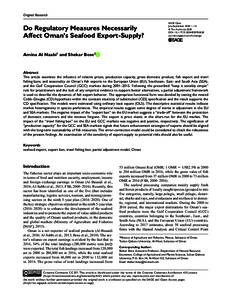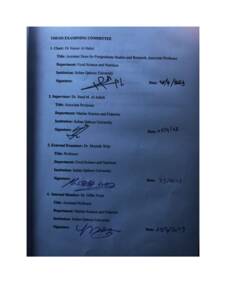وثيقة
Do regulatory measures necessarily affect Oman’s seafood export-supply?.
المعرف
DOI: 10.1177/2158244020950658
المصدر
SAGE Open. v. 10, 3
المساهمون
Bose, Shekar., مؤلف
الدولة
United States.
مكان النشر
California
الناشر
SAGE Publications Inc.
ميلادي
2020-07-01
اللغة
الأنجليزية
الموضوع
الملخص الإنجليزي
This article examines the influence of relative prices, production capacity, gross domestic product, fish export and trawl fishing bans, and seasonality on Oman’s fish exports to the European Union (EU), Southeast-, East- and South Asia (SEA), and the Gulf Cooperation Council (GCC) markets during 2001–2015. Following the prescribed “keep it sensibly simple” rule for practitioners and the lack of any empirical evidence to support better alternatives, a partial adjustment framework is used to describe the dynamics of fish export behavior. The appropriate functional form was decided by testing the nested Cobb–Douglas (CD) hypothesis within the constant elasticity of substitution (CES) specification and the result supports the CD specification. The models were estimated using ordinary least square (OLS). The descriptive statistical results indicate market heterogeneity in species preferences. The empirical results suggest some degree of inertia in adjustment in the EU and SEA markets. The negative impact of the “export ban” on the EU market suggests a “trade-off” between the protection of domestic consumers and the revenue forgone. The export is price elastic in the short-run for the EU market. The impact of the “trawl fishing ban” on the EU and GCC markets was negative and positive, respectively. The significance of “production capacity” for the GCC and SEA markets signals that future enhancement strategies of exports should be aligned with the long-term sustainability of fish resources. The error-correction model could be considered to check the robustness of the present findings. An examination of the sensitivity of export-supply to potential risks should also be useful.
ISSN
2158-2440
قالب العنصر
مقالات الدوريات


